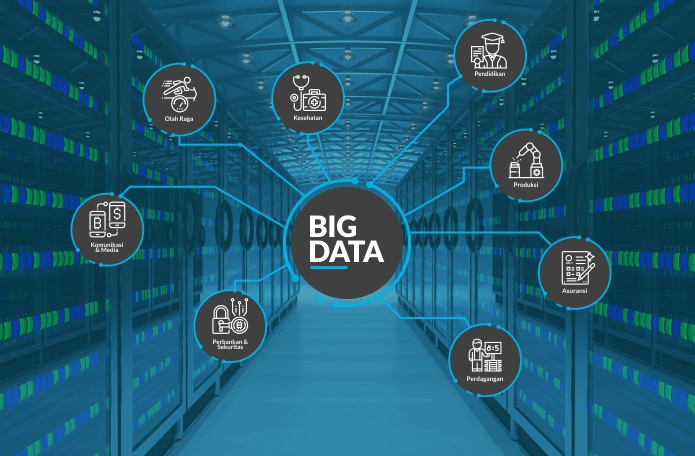The Seven V's of Big Data Analytics
The concept of the Seven V’s of Big Data Analytics provides a framework to understand the unique characteristics and challenges associated with big data. These V’s represent various aspects of big data that organizations need to consider when implementing data analytics strategies.
Their are The Seven V’s of Big Data Analytics

Big data is a combination of structured, semistructured and unstructured data collected by organizations that can be mined for information and used in machine learning projects, predictive modeling and other advanced analytics applications.
The Seven V’s are as follows:
Volume:
Volume refers to the massive amount of data generated and collected from various sources. Big data analytics deals with datasets that are too large to be processed and analyzed using traditional methods. The volume of data requires scalable storage and processing solutions.
Velocity:
Velocity represents the speed at which data is generated and the rate at which it must be processed and analyzed. Big data often arrives in real-time or near real-time, such as data streams from sensors, social media feeds, or financial transactions. Analyzing data at high velocity requires efficient data ingestion and processing mechanisms.
Variety:
Variety refers to the diverse types and formats of data that exist in big data. It includes structured data (e.g., databases, spreadsheets) and unstructured data (e.g., text, images, videos). Big data analytics involves integrating and analyzing data from multiple sources with different formats and structures.
Veracity: Veracity refers to the reliability and quality of the data. Big data analytics deals with data that may be incomplete, inaccurate, or inconsistent. Ensuring data quality and implementing data cleansing and validation processes are crucial for obtaining reliable insights.
Variability:
Variability describes the inconsistency and volatility of data. Data patterns and characteristics can change over time, making it challenging to analyze and predict outcomes accurately. Big data analytics requires techniques to handle and adapt to the variability in data patterns and sources.
Value:
Value represents the potential insights and business value that can be derived from big data analytics. The goal is to extract meaningful information and actionable insights from the data to drive decision-making, optimize processes, identify trends, and gain a competitive advantage.
Visualization:
Visualization refers to the presentation of analyzed data in a visual format that is easily understandable and accessible to stakeholders. Big data analytics often involves complex and multidimensional datasets, and effective data visualization techniques, such as charts, graphs, and interactive dashboards, help communicate insights effectively.
Considering these Seven V’s helps organizations understand the unique characteristics and challenges associated with big data analytics. By addressing these factors, organizations can develop effective strategies to harness the power of big data and derive valuable insights to drive business success.
The 3 Most important V’s of Big Data

While all the Seven V’s of Big Data Analytics are important, the three most commonly emphasized V’s of big data are:
Volume:
Volume refers to the vast amount of data generated and collected. It represents the scale of data, typically in terabytes, petabytes, or even exabytes. The volume of data is a fundamental aspect of big data, as traditional data processing techniques are often inadequate for handling such large datasets. Analyzing and processing large volumes of data require scalable storage systems, distributed computing frameworks, and parallel processing capabilities.
Velocity:
Velocity refers to the speed at which data is generated and the rate at which it must be processed and analyzed. With the advent of real-time data streams from sources like social media, sensors, and financial transactions, organizations need to capture and analyze data in near real-time or in real-time. The ability to handle and process data at high velocity is essential for timely decision-making, fraud detection, risk management, and other time-sensitive applications.
Variety:
Variety represents the diversity of data types and sources. Big data encompasses structured, semi-structured, and unstructured data, including text, images, videos, social media posts, and sensor data. Dealing with diverse data sources and formats requires flexible data integration and analysis techniques. Traditional relational databases may not be sufficient to handle unstructured data, necessitating the use of NoSQL databases, data lakes, or distributed file systems.
These three V’s collectively capture the essence of big data and pose significant challenges and opportunities for organizations. However, it’s important to note that the importance of each V can vary depending on the specific use case and context of the organization. Other V’s, such as veracity, value, variability, and visualization, also play crucial roles in extracting meaningful insights and deriving value from big data.
What is Big Data in AI?
Big data in AI refers to the large and complex datasets that are used to train, validate, and improve artificial intelligence (AI) models and algorithms. Big data plays a crucial role in AI as it provides the necessary raw material for machine learning and deep learning algorithms to learn patterns, make predictions, and perform various tasks.
AI algorithms require substantial amounts of data to learn from and generalize their understanding of the world. Big data provides the training data that AI models use to recognize patterns, extract meaningful insights, and make accurate predictions. The availability of extensive and diverse datasets allows AI models to capture complex relationships and nuances that may not be apparent in smaller or less representative datasets.
Big data in AI encompasses various types of data, including structured data (such as numerical values in databases), semi-structured data (like JSON or XML files), and unstructured data (such as text, images, audio, and video). The integration and analysis of these different data types enable AI models to handle a wide range of tasks, including natural language processing, computer vision, speech recognition, and recommendation systems.
Moreover, big data facilitates the continuous improvement and refinement of AI models. As AI algorithms are deployed and interact with real-world data, they generate additional data, which can be used to update and enhance the models over time. This iterative process, known as “training on the fly” or “online learning,” enables AI systems to adapt to evolving circumstances and improve their performance.
In summary, big data provides the fuel for AI algorithms to learn, adapt, and deliver valuable insights and intelligent responses. By leveraging large and diverse datasets, AI systems can uncover patterns, make accurate predictions, and automate complex tasks, leading to advancements in various fields, such as healthcare, finance, transportation, and customer service
Read More : Data Sources of Big Data: Discover the Maestro of Information
